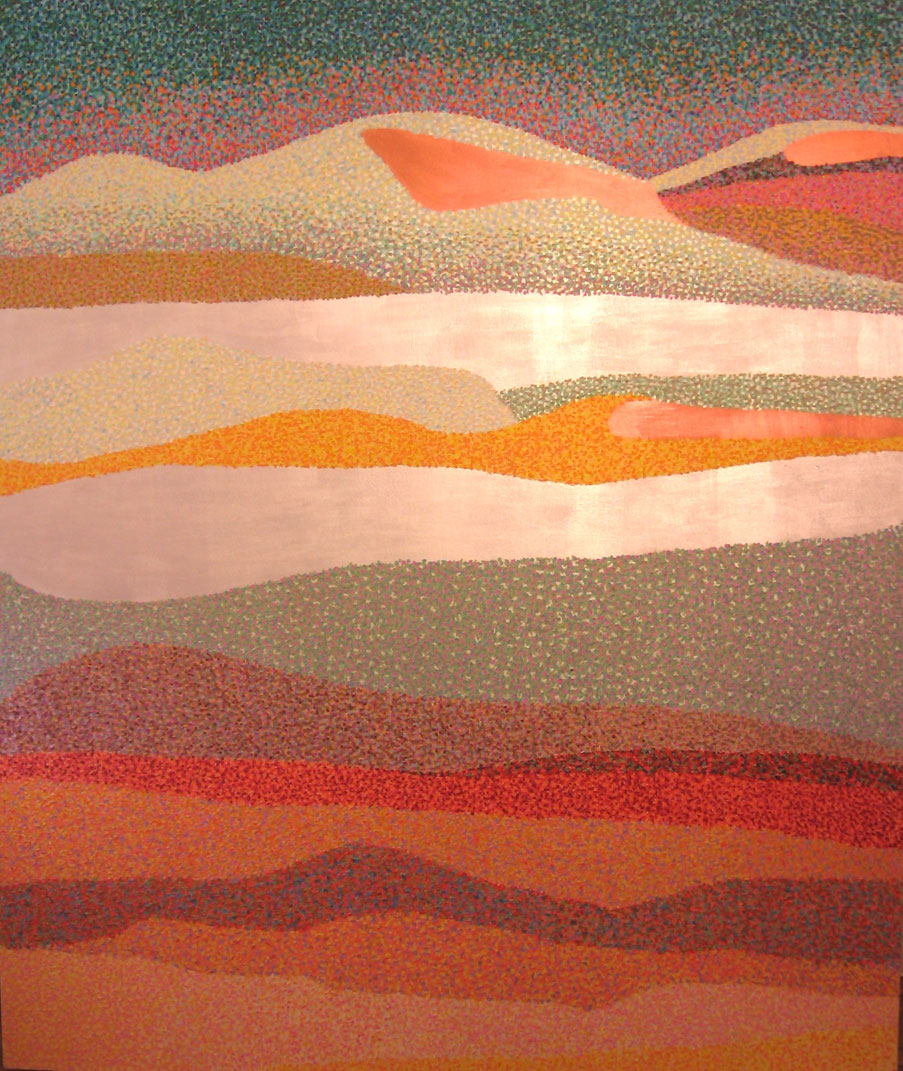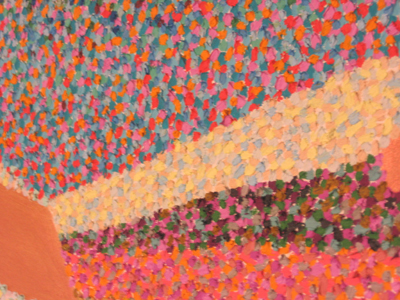 |
 |
ON THE PIECE: Mirage 11 has been inspired by the actual location of the Sea of Alabaster, the White Sands location in New Mexico. Acording to the Apache, the Giver of Life warned of a great flood encroaching. He directed White Painted Woman to seek shelter in a floating abalone shell. When the waters receded, the shell came to rest at White Sands. Here, her spirit is believed to continue to linger as a positive energy.
ON THE SERIES: The Mirage Series consists of 15 oil paintings, 75 chalk pastel studies, and 15 oil pastel studies. The works are of abstracted landscapes, the landscapes are places rendered as sacred by the indigenes of North America. Expressed through "moving" points of color, these works pursue the vital energy embodied, ebbing, in these spaces. The indigenes that had inhabited these spaces left many testaments of sacredness. The signs of their being: serpent mounds, rock paintings, medicine wheels, petroglyphs, inukskuks, totem poles, are scattered all across North America, or Great Turtle Island. Beyond this, there is the unseen: legends and folklore of Creation and of the involvement of each place within a spiritual realm.
On a more visual level, in the final paintings, most of the sections are created by using a plethora of contrasting and/or harmonious colors across. When glancing over, some sections can be named a color, other sections remain ambiguous. Still other sections are one solid iridescent color. It is not clear as to whether the mass is solid or liquid (such as flatlands or a river). Yet, it is clear that all the planes have mass and a surface, that (like a river) even though the movement of the water can be seen by the eye only on the surface, it is a representation of the movement of energy in the mass, in its entirety. Each section moves, or "flows"... this movement can not be seen, but can be intuited.
While creating the works, I was mustered by some reflection and guiding questions which may take a lifetime to answer. These places help a people understand who they are. They give meaning to life, enriching ceremonies, religions, and cultures. They provide guidelines for behavior and inspiration for the future. At the core of these places is a statement that expresses the relationship that humans have with each other, with the land, and with their source of Creation. From these markers of the past, there is evidence of deep and profound respect within these relationships. All things are sacred, thus all places are sacred. Where do we thank our Creator? Where do we celebrate in ceremony? Where do we seek visions? Where do we bury our dead? Where do we name our children? Where do we obtain food? Where do we obtain medicines? Where do we greet the morning sun? Where do we welcome spring? Where do we seek out healing, contemplation, and rejuvenation? What will the monuments we leave for our descendants say about the way we treat each other? What will they say about the way we treat the land? And what will they say about our relationship with our Creator?
All ground is hallowed because all of our activities
are a part of the sacred cycle of life. Clearly it
will be a long journey before humans come to one mind
about how we treat each other and how we relate to the
source of Creation. These works aim to kindle
inspiration within its audience along the journey.